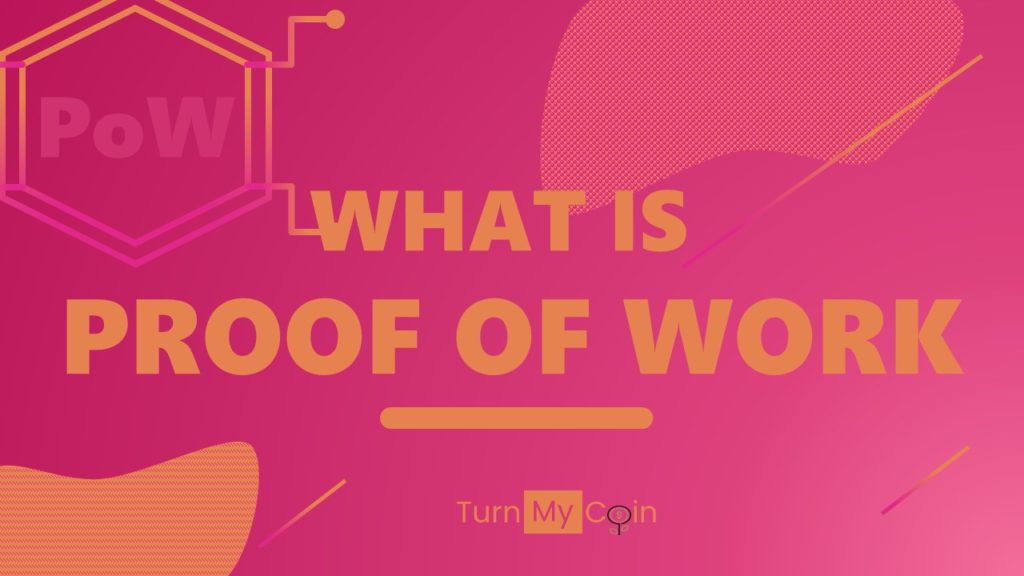Last updated on June 6th, 2024 at 06:20 am
The idea of the distribution of decision-making and control to a distributed system/network is decentralization which, in fact, is the original vision behind cryptocurrencies like Bitcoin & Ethereum. To implement this, there needs to be a way to authenticate transactions without involving financial institutions (like we do with conventional currencies).
In a nutshell, Proof of Work (PoW) does just that – ensuring the security & integrity of crypto transactions without an individual/organization calling the shots. In this article, I am going to talk about what is PoW, how it works, and much more in detail.
Let’s dive right into it!
1. What is PoW and How Does it Work?
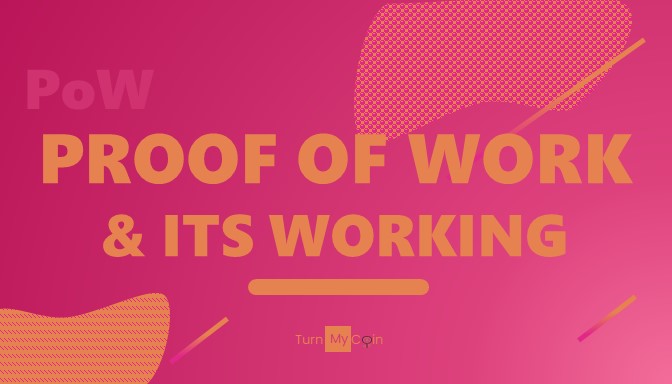
Proof of Work, as I mentioned earlier, ensures the security of crypto transactions. But, what exactly is it, and how does it keep track of transactions.
You need to understand the possible double-spending problem with cryptocurrencies (or any other digital currency) to truly comprehend the power and necessity of PoW.
For instance, when you spend a $10 bill to buy a burger, you cannot spend the same bill again anywhere else. Unlike these conventional currencies, it is completely possible to copy the details of an online transaction and produce it elsewhere. This is where Proof of Work (PoW) comes into play.
A distributed Ledger supports all the details related to cryptocurrencies. It is entirely public and has a record of transactions in the form of blocks. So, even if someone tries to double-spend their crypto holdings, they cannot change the records present with other users.
A long string of numbers & letters aka Proof of Work authenticates each transaction. PoW makes sure that even a minor change to the original set of data changes the entire hash (or a unique identifier).
Here’s why PoW works well with cryptocurrencies. A one-way hash function generates these distinctive strings (hashes). This means miners can use them to verify if it matches the original transaction but no one can use it to obtain the data, rendering it impossible to duplicate or fraud a transaction.
The only way to find the right hash for a particular transaction is by guessing (read, mining) which we will talk about later in the guide. But miners get an incentive for this work in the form of cryptocurrency. For instance, if a miner solves the puzzle and becomes the first one to find a hash to verify a Bitcoin transaction, they get a batch of fresh Bitcoins in return.
Example of Proof of Work
Now that I have given you a full picture of the Proof of Work, let’s look at a few examples.
The hashing functions generate random strings with combinations of letters and numbers. So, a miner needs to keep guessing until they find the right PoW with the exact number of leading zeros and, depending on the complexity of this transaction, they receive a fresh batch of cryptocurrencies.
Here is an example of PoW for a BTC transaction.
00000000000000000005ddc4846ffa759a4fc9e977f5996d3a00bb03d051a095 was the valid hash for a block 711238 which was mined on November 25, 2021. The award for successfully generating this hash was 6.25000000 BTC. Along with this base fee, the miner received an additional 0.05565939 BTC was paid as transaction fees for 1553 transactions added to this block.
2. Uses of PoW?
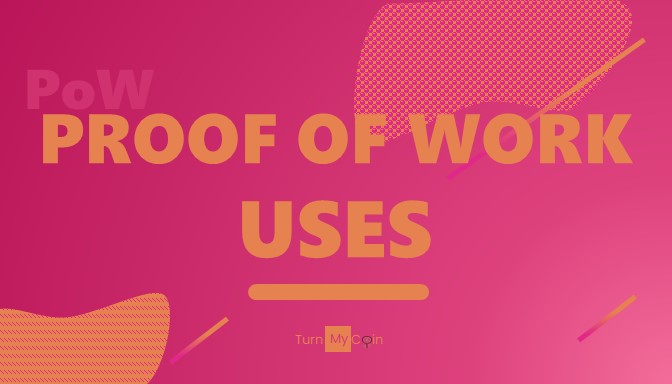
Proof of Work has a wide range of applications, especially related to cryptocurrency mining. Bitcoin is the first, and the largest, application of PoW. Ethereum 1.0, Litecoin, and many other blockchain applications also use this consensus mechanism.
Here’s an interesting fact. PoW was originally invented to prevent spam emails in bulk.
3. Relation of Proof of Work and Mining
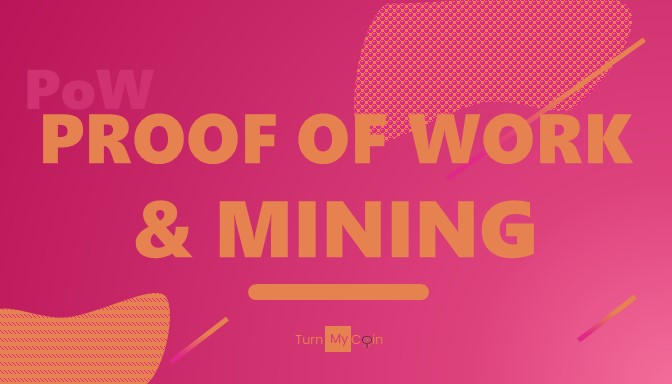
Before we get to the relation between PoW and Mining, let’s understand the mining process first.
In short, mining makes way for new cryptocurrencies to be introduced in the distributed system by adding valid blocks. If someone follows the chain, they would know the origin and current address of every cryptocurrency.
Crypto mining is a way to validate transactions and to maintain the sanctity of the distributed blockchain ledger. Each block holds the permanent record of a crypto transaction – its source, destination, and a unique identifier – Proof of Work. Miners carry out mining by solving a complex mathematical problem to identify which is then shared & validated by other miners.
Now, Proof of Work or PoW is the algorithm that decides the rules and difficulty of the mining process. So, as long as miners keep mining, the entire blockchain network continues to grow and, in turn, is more stable.
4. How Does PoW Validate Cryptocurrency Transactions?
Proof-of-Work is confirmation of a cryptocurrency transaction that has already happened. Unless a miner validates the transaction and brings its Proof of Work, no new crypto-currency is added to the network. At any given second, everyone essentially knows the current state of every cryptocurrency.
5. How Does it Ensure the Security of the Blockchain network?
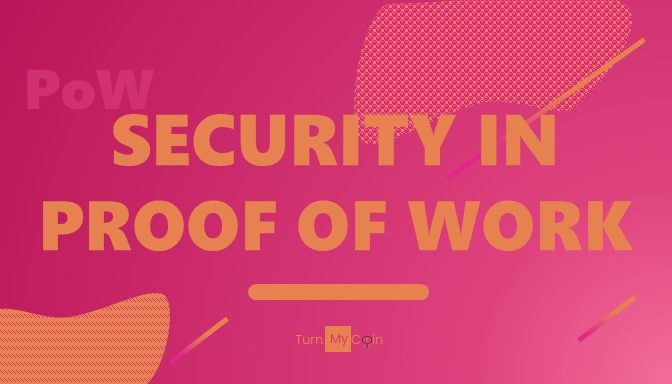
The process of finding the Proof of Work takes about an average of 10 minutes even after thousands of miners are trying to be the first ones to find it. And since PoW defines the complexity of computation required to validate a transaction, it is different for every single transaction.
The computation required to find the right PoW requires tonnes of power, memory and expensive computers which is a sustainability problem in itself (more on that later). To understand the complexity of these computations, let’s take Bitcoin as an example.
Miners guess the hashes I mentioned earlier which is a long combination of random numbers and letters. The end-goal of computation is simple – find a valid PoW for a transaction that has happened. Finding the right hash is an exhaustive process that usually means, billions and trillions of computations every second.
But, what’s the incentive for these Bitcoin miners? The first miner to find the correct PoW gets the next batch of bitcoin. And since a new batch of Bitcoin is introduced in the system, the race to find the PoW for each Bitcoin begins again!
6. Advantages & Disadvantages of PoW

So far in this article, PoW sounds like a bed of roses. Well, it isn’t. It has its own set of disadvantages. Let’s list out its pros first.
1. Security
Proof of Work or PoW is one of the main reasons why cryptocurrencies are so secure. The complexity of computations required to validate a transaction and to add new blocks prevents it from being attacked. Besides, the competition between thousands of miners to find the winning PoS and get the reward of a fresh batch of cryptocurrency also makes sure that there is no room for any fraudulent activity.
2. Decentralization
There is no one individual or entity/organization that controls the flow of cryptocurrency. PoW makes sure that it stays decentralized by giving the power of authenticating transactions & adding new blocks to the distributed ledger. Well, anyone who can afford the specialized computers, memory, and power required to do it.
3. Prevents Double Spending
The unpredictability of PoW (or hashes) that authenticate cryptocurrency transactions maintains the sanctity of the entire blockchain. No one, not even the makers of a cryptocurrency, can predict the PoW of a transaction rendering it impossible for a single entity to control it. The sheer randomness powered by PoW prevents users to double spend which is a common fear among digital currencies.
I have listed the advantages of PoW above. Let’s look at a few disadvantages of Proof of Work that will make you question the validity of cryptocurrencies in absence of an efficient PoW alternative in the long run.
1. 51% Attack
51% attack is a distant possibility with PoW but it still is a possibility. This attack basically means an organization or group of organizations controlling more than 50% of the hashing power of a blockchain network. In such a case, the controlling entity can block the issue of new cryptocurrencies in circulation and authentication of transactions. It can also cause the malicious entity to reverse/replicate its transactions and thus, cause the double-spending problem.
But here’s the thing. The blockchain network becomes longer every time a miner authenticates a transaction. This makes the chances of a 51% attack happening a distant possibility. Besides, the controlling entity in a 51% attack won’t be able to reverse the authenticated transactions or prevent other miners from broadcasting the winning PoW.
2. Sustainability
As I mentioned earlier, the mining process of finding the winning PoW requires huge computing power. Let’s consider Bitcoin mining to put things into perspective. Around 240,000 Bitcoin transactions are made on an average day and 1719.51 kilowatt-hours (kWh) energy is required to authenticate one BTC transaction. The energy required to authenticate one BTC transaction can power an average US household for 59 days!
This is one of the reasons why the long term sustainability of PoW depends on the availability of renewable energy resources or a better, more efficient alternative. Just to add over here, Ethereum 2.0 was introduced in 2021 which uses the Proof of Stake (PoS) protocol. Instead of it’s earlier version which used PoW.
Proof of Stake (PoS), a PoW alternative, is gaining popularity. It is an alternative consensus algorithm that gives the mining power to someone who holds more coins.
3. Random Computations
The mathematical computations required for PoW work are trial and error, or in other words – useless. When I say “useless”, I mean that these complex computations cannot be used elsewhere. They have no applications, whatsoever, in any other field other than finding the winning PoW itself.
Summary
PoW has been one of the leading validation mechanisms in Cryptocurrencies since its inception. There are many other validation protocols like Proof of Stake, Proof-of-Participation, Proof-of-Activity, Proof-of-Selection, Proof-of-Burn, Proof-of-Capacity, Proof-of-Space, Proof-of-Spacetime.
PoW is a very stable and secure protocol. However, due to its energy inefficiency, its future remains uncertain. Though there are updates on Bitcoin changing its protocol, if it does it will certainly make Bitcoin environment friendly. Just like ETH 2.0, one day we may see Bitcoin phasing out the PoW.
For more updates visit our blog: turnmycoin.com
